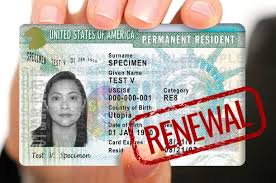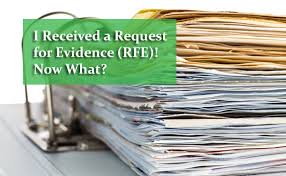Learn More About:
Immigration News & Updates eNewsletter © 2011 - 2021
For questions about U.S. Residency, Green Cards and Immigration Visas, Visit our Website at: www.ImmigrateToday.com or call our office at: (954) 382-5378
Check Out This Cool Stuff For Immigrants....
Immigration
Questions & Answers
This Week's Immigration News
Immigration News & Updates
Immigration How To:
How Do I Answer This Letter I Just Got From Immigration?
Questions About Immigration? We have the answers!
We Are Here To Help, Call us now for a FREE consultation (954) 382-5378
Automatic Work Permit Extensions Provide Relief
Amid Long Delays In Renewal Processing!
AMERICAN IMMIGRATION
LAW CENTERS
Immigration Questions: (954) 382-5378
POSTING DATE: July 12, 2021
Question: My son is 32 and just got divorced. He wants to make a new start and come to live in the U.S. to be closer to his family. I have had my green card since 2013, but was told that I could not sponsor him while he was married. Now that he is divorced, would it be faster if I get my citizenship before filing his immigration papers? How long will that be?
American Immigration
Law Center
2645 Executive Park Drive
Suite 137
Weston, Florida 33331
Many immigrants are not aware that their work permits can automatically be extended. A little known policy, called the Automatic Employment Authorization Document (EAD) Extension rule allows pending residency and other immigrants with expiring work permits to keep working for six months.
Under the rule, residency applicants and others in certain immigration categories with expiring employment authorization documents who have filed for extensions (form I-765), are automatically authorized to continue working for an additional six month period while waiting for the renewal to be issued.
Helpful Immigration Tips You Can Use...
Always Keep Copies Of All Immigration Documents And Correspondence!
Immigration application forms are very comprehensive, requiring large amounts of data and historical information, which are often not available in one single source document. As a result, Immigrants and sponsors often spend many hours gathering documents, obtaining information from relatives and looking up dates and relevant information in order to properly complete the forms.
Personal data, dates, addresses, pertinent documents like an I-94 Arrival/Departure card and other official paperwork are often gathered together during the application process, then sent out to the USCIS along with the application without any thought.
Tips On Successfully Answering Requests for Evidence (RFE)
A Request for Evidence (RFE) is a letter that the USCIS officer sends you to request additional information or documentation on your application. RFE requests are generally most frequently issued for missing information or documentation to establish your eligibility.
Properly responding to an RFE from the USCIS
The first tip is the most obvious, always read the RFE letter very carefully to determine exactly what kind of evidence or document is being requested.
The family immigration process often takes many, many years waiting in line and then finally once an Immigrant Visa becomes available, the National Visa Center (NVC) and U.S. Consulate begin final processing for your relative, ending in the immigrant visa consular interview appointment and thereafter immigrating to the U.S..
But even after waiting all those years, the final processing steps themselves can be very intimidating and stressful. Here is a quick overview of the process and a few tips to keep in mind in order to help you properly provide the required documentation so as not to delay your relative’s consular interview.
Tips On Successfully Navigating The National Visa Center Process
Answer: No worries, its best to file for your son now as a green card holder. Believe it or not, the waiting time for the adult child of a U.S. Resident (green card holder) is less than for that of a U.S. Citizen. The immigration category for single adult children of residents is F2B, with a current visa waiting line of about 6 years , while the immigration category for single adult children of U.S. citizens is F1, with a current visa waiting line of 7 years. It is unfortunate that so many residents unnecessarily wait to become naturalized before they file for children and inadvertently delay the immigration process for their children. The main benefit of a U.S. citizen filing for a single adult child over that of a resident, is that if the sponsoring parent is a citizen and the child marries, he or she does not lose the immigration petition, just automatically moves to a longer immigration visa waiting line, F3 (about 12+ years). Whereas if the single adult child of a resident marries, his or her entire immigration petition is automatically cancelled. So, since the national USCIS service centers continue to accept and process cases for all qualifying family members, it makes sense for you to file for your daughter now and get him a place in the immigration visa waiting line, rather than waiting to naturalize. Let us know if you would like us to handle your son’s case.
This comes in very handy now that the normal processing time for work permit renewals takes 7-10 months. Currently the National Benefits Center is working on I-765 Work Permit applications based upon residency, that were filed in September 2020. The Biden administration is working to reduce processing times and is approving work permit for two years instead of one. This is expected to eventually significantly reduce work permit processing times in the future.
To initiate final consular processing, most sponsors receive a notification email from the NVC called a “Notice of Immigrant Visa Case Creation” which gives the case number, ID and link to login to the Consular Electronic Application Center (CEAC) to initiate the process. Here are the basic steps in the process:
1) Pay NVC Bills: The first step is to pay the consular fees to begin the process. Fees are currently $445 per person or $325 per person and $120 for family.
2) Submit Affidavit of Support and supporting documents: Once the fees are paid, the next step is for the sponsor to immediately submit the completed, signed form I-864 Affidavit of Support, current tax return (or tax transcripts) , W-2, paystubs and proof of residency or citizenship through the CEAC system. Failure to quickly provide the required financial documents will result in delay of the case.
3) Complete the DS260 Immigrant Visa Application: at this stage, the immigrating family members must complete the DS260 form for each person and submit.
4) Civil Documents: all immigrants are required to submit certain civil documents, including, Birth and Marriage certificates, divorce decrees, passport biographic page, police certificate, passport photos, criminal records, etc. These documents must be carefully scanned and uploaded through the CEAC system for each immigrating family member.
5) NVC Review: Once the documents are submitted, it can take up to 60 days for the NVC to review the documents. If documents submitted are not clear or scanned improperly, they are rejected and the sponsor/immigrant will receive an email notification to log in and replace such documents with properly scanned versions.
6) Consular Interview: Once the NVC finds all the documentation is acceptable, the NVC will email notification that the case is complete and the next step is to wait for notification from the consulate. Within about 30 days or so the U.S. Consulate will send a notification email with the date and time of the interview, along with instructions on scheduling the required medical examination and listing documentation to bring to the medical exam and consular interview.
It’s important to understand that the NVC process can be completed in as little as 30 days if the case is properly prepared and submitted. If not, the process can end up being delayed for many months. In some cases, I have had new clients come to me over six months into the process exasperated, annoyed, and nearly ready to give up after having previously repeatedly tried to do the case themselves. In addition to sponsors being unsure of which documents are required and unfamiliar with the CEAC system, the main delays are usually caused by documents being uploaded which do not meet the requirements.
Here’s a few document tips:
Rule #1, never use your cell phone to take a picture of a document, all documents must be scanned at a clear resolution using a scanner and saved as a pdf. Pics taken with a cell phone will be rejected.
Rule #2, always make sure that the document you are scanning is upright on the page, since documents scanned sideways or upside-down will be rejected.
Rule #3, make sure to scan the entire document so that all sides are fully showing. Scans of documents which are cut off will be rejected. For instance, if a birth certificate has stamps, but the scanned page cuts a portion of the stamp off, the document will be rejected. Similarly, if a document is on oversized paper and the scan cuts off the bottom of the document, it will be rejected. The best approach is to take oversized documents to office depot and have them reduce it to letter size.
Rule #4, reduce the size of the pdf before uploading. The maximum size is 2 mb. Many documents with multiple pages scanned on copiers and printers will easily go over 2 mb, so you’ll need to use a pdf program which allows you to reduce the pdf size.
Rule #5, documents which are in the same language as the country from which the family members are immigrating do not need English translations. For instance, if an immigrant is from Colombia and all his or her documents are in Spanish, no English translations are required to be submitted.
Finally, remember that every time you submit or resubmit documents, it can take the NVC up to 30 days or more to review them, this can cause delay after delay. So the best approach is to carefully prepare the documents, review the scans to make sure they meet each and every specification before uploading and submitting and then check your emails frequently in case the NVC issues a request for resubmission on one or more documents, so that you can take care of it immediately.
We can quickly and easily take care of the entire NVC process for you! Give us a call at: 954-382-5378.
The USCIS has announced that it will continue to extend its policy of accepting late filings of responses to requests for evidence (RFEs) and notices of intent to deny (NOIDs), Notices of Intent to Revoke (NOIR) and others, including, Notice of Appeal or Motions (Form I-290B) filed by applicants and petitioners. Under the new directive, individuals will be given an additional 60 days past the deadline in order to respond to USCIS requests issued between March 1, 2020 and September 30, 2021. For instance, if a response is due to be received by the USCIS by the deadline of August 1, 2021, the new deadline will be September 30, 2021.
The USCIS Once Again Extends Policy Accepting Late Filings Of Responses To Requests For Evidence And Other Notices
Tips On Responding:
When filing responses to USCIS requests, always send using Priority Mail or Express Mail whenever possible (Fed-ex/UPS cannot deliver to USCIS P.O. Boxes). Never use Certified Mail, it is very, very slow. Be sure to include a copy of the USCIS request ON TOP OF your response. Most important of all, make a copy of the entire response package before sending for your records, including the USCIS request, your response and all supporting documentation sent. Finally, always send at least 7 days or more BEFORE the deadline to ensure that your response reaches the USCIS prior to the deadline. Responses received after the deadline generally result in denial, even if the postmark on the envelop is before the deadline.
Read the USCIS announcement extending the time on accepting late filings
Question: I got my US Citizenship earlier this year and filed to sponsor my dad in February 2021. My mom passed last year and my sisters and I live in Florida, so my dad does not have many other family members in Jamaica. When I filed for dad, he was in Jamaica, now he is here since May visiting us in the US. My sisters and I have a few questions about his case. We are wondering if its possible to convert his case from the one I filed initially to have him go through the embassy, to one where he can stay in the US and get his papers here? If it is possible, can you please let us know if you can help us and how long the process will take? His I-94 expires in Nov, is it a problem if he overstays? Thank you.
Answer: Parents of U.S Citizens are in a special category called “Immediate Relatives” which allows them to immigrate to the U.S. immediately, meaning they are not required to wait for a visa to be available like many other family categories. There are two options for Parents to obtain U.S. Residency, depending upon whether they have a U.S. Visa. The first option is called U.S. Adjustment of Status: This is for Parents who come to the U.S. on a Tourist or other legal visa and decide to immigrate. In such cases we can apply to adjust status to Residency inside the U.S., and they will receive residency (a green card) within about 8-10 months. The second option, called Consular Processing (which is what you dad is currently assigned to) is for Parents who either don’t have a U.S. visa or who prefer to stay in their home country while processing for an Immigrant Visa. The current estimated processing time is about 24 months, due to covid-19 delays.
In your case, since your dad is already here, we can adjust his status to a green card while he is in the U.S. and there is no need for him to leave the country. It will not be a problem that his I-94 expires in November. Once his residency case is filed, he is legally permitted to stay inside the U.S. during the entire residency process.
Question: Thanks for taking my email question. I got my green card through my husband back in 2017 and plan to file for my early citizenship through my marriage next month when we have the money for filing fees. My question is about my son. He is 16 and got his residency along with me. I am wondering if he can apply for citizenship early like me since I am married to a U.S. citizen or does he have to wait for the full 5 years? We are confused about that. Thank you for helping us understand it.
Answer: Under the Child Citizenship Act of 2000 children who are under age 18 automatically acquire United States citizenship when at least one biological parent naturalizes, as long as the child resides with that parent. There is no requirement that a child hold residency status for five years. In fact, when a minor child under age 18 immigrates to the U.S. through a U.S. parent (biological), he or she automatically becomes a U.S. Citizen upon entry to the U.S.. However, timing is everything, so it is important to understand that the law only applies to children under age 18 at the time the parent naturalizes, not files the naturalization application. So, with long naturalization application processing, it can take a up to a year or more to complete the naturalization process and actually swear in. If your son turns age 18 during that time, he will not acquire U.S. citizenship along with you and will instead have to file for his citizenship separately. So don’t delay, file as soon as you can, and your son will automatically become a citizen along with you. He will not get a Citizenship Certificate, but you can use yours to apply for his U.S. passport.
Based upon my experience, about 70-80% of applicants have no copies or records of the immigration forms and documents which were filed with the USCIS. And what many do not realize is that once the application and supporting documents are provided to the USCIS, they create an immigration file record of information about the individuals included in the application which are no longer accessible to the filer once the case is filed. As a result, requests for more evidence or information issued by the USCIS in a case may be very difficult to respond to, without proper reference to the information on the application forms and documents originally sent to the USCIS as part of the application. Couple this with the fact that many immigration applications remain pending for several years or more before the USCIS actually reviews the file and makes a request. Typically, by that time, in many cases, the information and documents used to complete the forms has long since been misplaced or destroyed, often making it very difficult if not impossible to determine what information was provided to the USCIS and what was not.
Applicants receiving a USCIS request often say, “I already gave that to them”, but have no way to know for sure or to prove it. This can result in the same wrong “document” being provided to the USICS in response to a request, which results in a denial of the entire application. This is especially tragic when an application for a family member may have been pending for many, many years. A simple example would be in the case of a U.S. Citizen parent sponsoring an adult, single child, where the immigrant visa waiting time is approximately 6+ years, and USCIS processing time to adjudicate the case is about five years from the date the case is filed. That means that when the USCIS finally gets around to taking the application from the waiting queue and reviewing it after it has been sitting there for some five years, the officer will determine whether the application is complete, or whether additional evidence is necessary for approval. Let’s say that when the original case was filed, the parent provided a copy of her daughter’s birth certificate which was an outdated, handwritten format, rather than the new formal computer-generated certificate issued by the Registration General department in Jamaica. The USCIS letter requests that the parent provide the appropriate birth certificate issued by Jamaica, but does not specify which one and does not precisely say that the parent provided an outdated birth certificate and needs to provide one in the new format. The parent does not have a copy of the application package she filed and as a result, believes that she must have left out the birth certificate and now sends in the same old version. Once she does, the USCIS officer denies her daughter’s case for failure to provide the requested document. In such cases having a copy of the entire application and documents originally submitted would have provided the parent with a clue that the USCIS was not accepting the birth certificate she provided and she would likely have investigated and become informed that the new computer-generated format was required. This would have avoided the misery and disappointment of the denial of her daughter’s case. This is just one example, but I could go on and on. Finally, when an immigration case hits a road block and you need to get the assistance of a qualified immigration attorney, so much time and effort can be saved if you have a copy of the entire application to provide to the attorney to review. Otherwise, the attorney will need to file a Freedom of Information Act (FOIA) request to obtain a copy of the application and supporting documents, which can often take many, many months to obtain. So follow this advice, once your immigration application is complete and you are ready to send it out, take the extra step of making a copy of every single page of the application and documents and even go the next step and make a scanned copy so that you can always have it on your computer in digital format.
Some RFE's are more complex than the others and it is difficult to determine and some are simple and easy to understand. For more complicated RFE letters, you may want to retain an immigration attorney to assist you. Once you have determined what the letter is requesting, be sure to provide the exact document requested. For instance, an officer may request a “long form” of a Birth Certificate. If you respond that you do not have one, your case will likely be denied. The appropriate action to take is to request one from the departmental authority in your country of birth.
Timing, don’t wait too long to respond to an RFE
Depending on the type of case, you may have from 33 days to 87 days to respond so that the USCIS receives your response before the expiration date. Under new USCIS covid-19 policies, you have an additional 60 days to respond. However, if you fail to respond or filed after that deadline, your case will likely be denied. To be on the safe side, you should always send your response by Express or Priority Mail and get a delivery confirmation. Never send any communications to the USCIS via Certified Mail, which takes much longer and can risk your response being received late. Finally, remember that your response to the USCIS officers request must be RECEIVED by the USCIS ON or BEFORE the deadline. Responses received even one day late result in complete case denials.
Obtaining a decision from the USCIS after responding to the RFE
Depending upon the case, it could take up to 60 days or more. You can check the online status to see if it is stating that your RFE response has been received, or call the USCIS 800# to ask if the computer shows the USCIS received it. For adjustment case (I-485) requests, the officer may wait to receive your response before continuing processing of your Work Authorization application which will cause delays in its issuance. To avoid this, send your response as soon as possible and do not wait until you get near the deadline in the letter.
Questions? Call our office at: (954) 382-5378.













